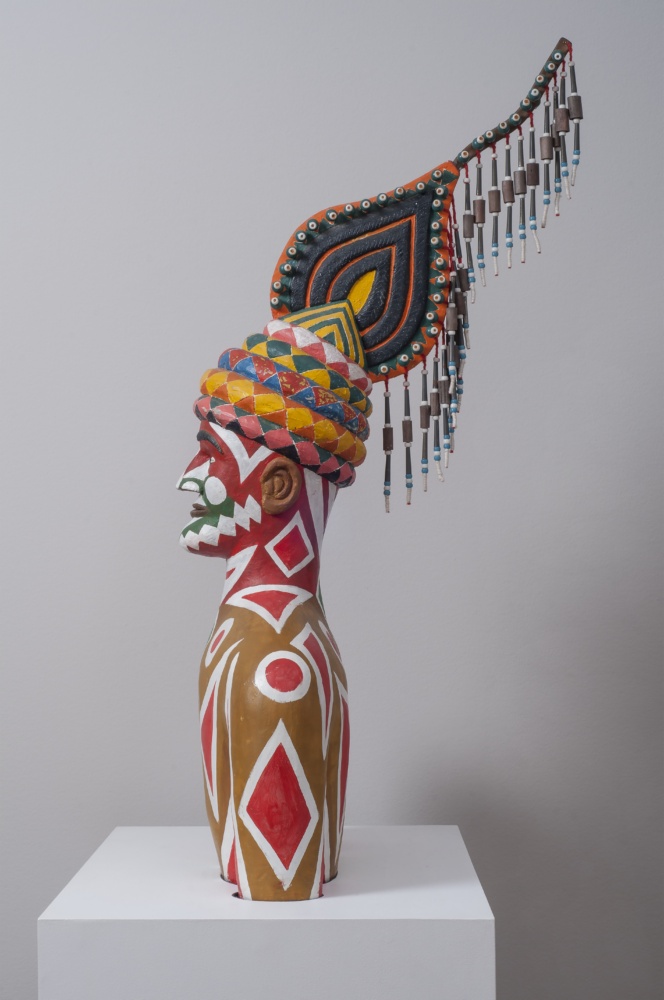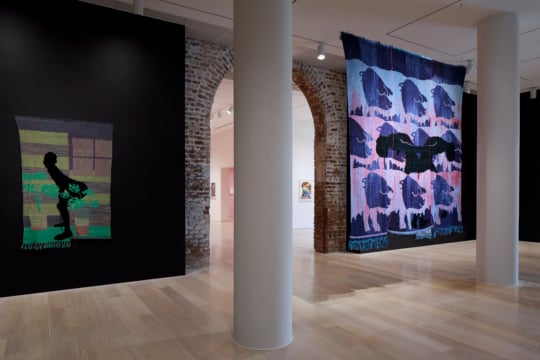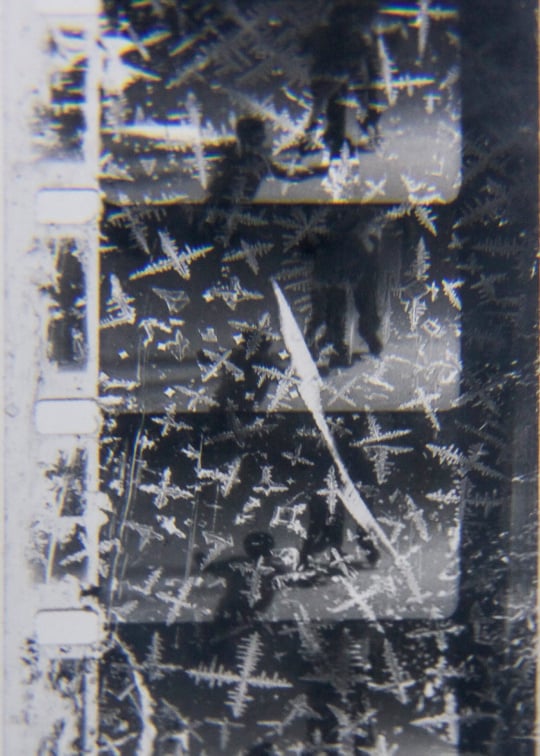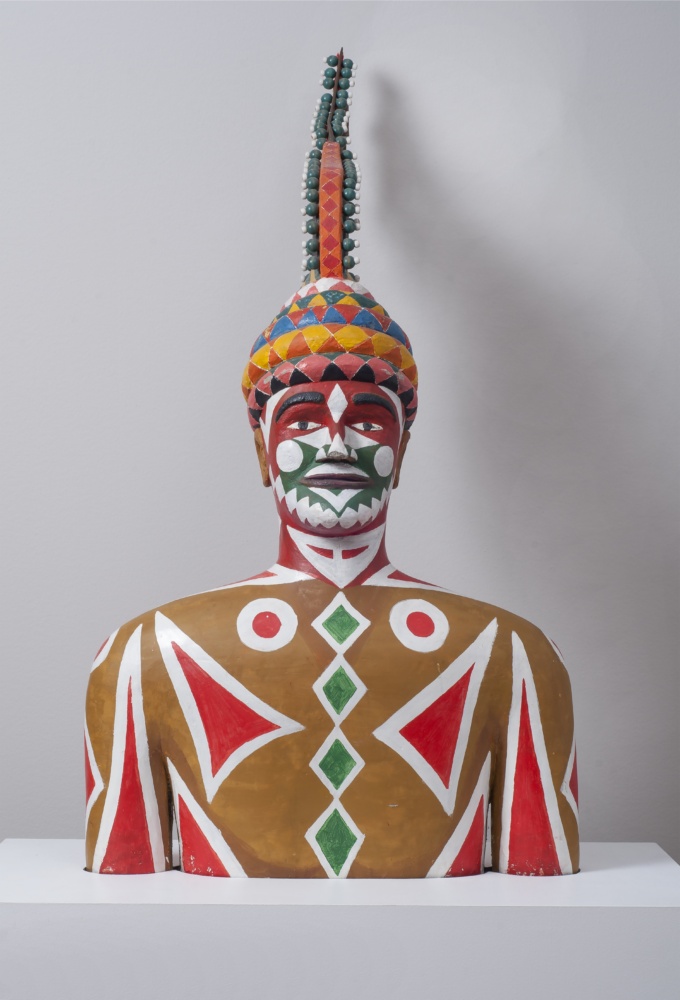
Overheard shards make art openings: snap judgements, effort to discern, quips at a speaker’s expense. There’s a delight in hearing people think out loud, thoughts colliding with the art and others.
Sometimes when I’m in an art museum, what I most want is the voice of a knowledgeable friend. I want the aural energy of those openings—the snaps and quips—alongside the precious, museum-collected objects.
This column offered a chance to get my wish and share it.
At the High (full disclosure: my workplace), I recently had the pleasure of experiencing Seeing With Spirit, a conversation between a religious professional and a museum staffer about a work of art. Dr. Gautham Reddy, a noted Hindu scholar and Emory University’s South Asian Studies Librarian, selected and spoke about one of St. EOM’s sculptures with Carlton Mackey, the High’s Assistant Director of Community Dialogue and Engagement.
For this article, I invited Reddy to reprise the conversation, and he and I discussed the work in the High’s galleries. This conversation happened after we both traveled to Pasaquan in Buena Vista, Georgia, which explains some of the advance knowledge we’re both bringing to the table, in addition to reading a bit on the subject.
Below, you can see Pasaquoyan Man with Ritual Headdress and Levitation Suit, a sculpture Eddie Owens Martin (also known as St. EOM) created. The Georgia-based, self-taught artist created the work from enamel and beads on concrete, over wire mesh, between 1965-1975. Click on the individual audio segments to hear us annotate the object, alternately drawing attention toward details and connecting aspects of St. EOM’s work with our experiences and interests.

So I was drawn to this item because, first of all, I was really struck by the vibrancy. There’s a lot of symbolic, kind of, iconic aspects in the art. There’s a very symmetrical geometrical appearance. The colors are just really rich and it’s very patterned. There’s the kind of shamanistic mysterious quality to this.
Dr. Gautham Reddy
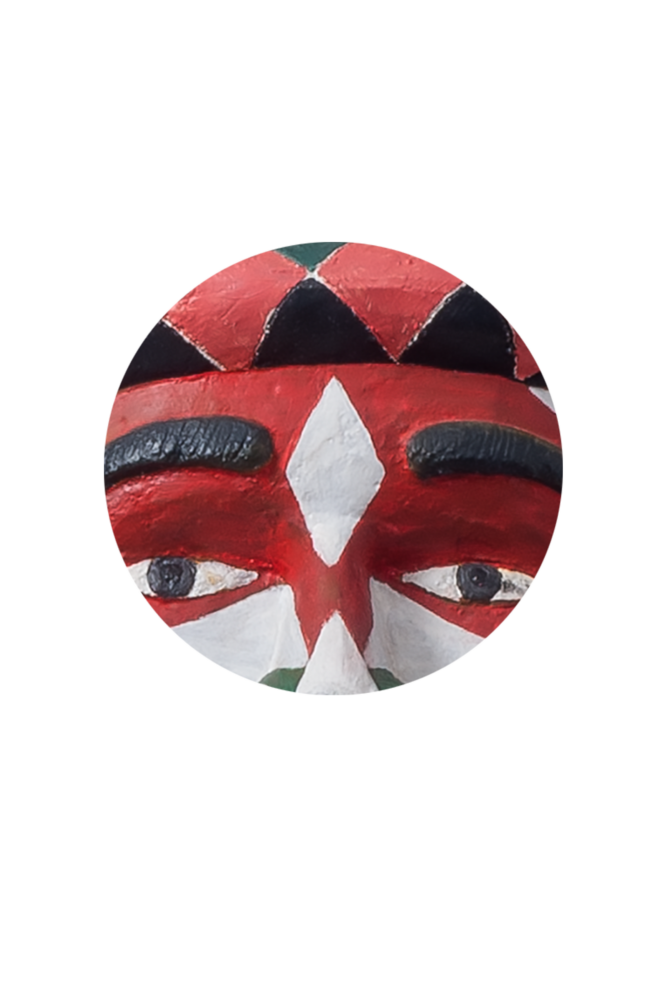
It reminds me a lot of Hindu tantric imagery, which is also very geometrical, very intentional. Here, I don’t really know the system that this is coming from, or I didn’t, I should say, but I was drawn. There was clearly a meaning, there was an intentionality, there was really pronounced, iconic quality to this. I also see like between the two eyes, there’s like a diamond, which, for me again, resonates with a sense of a third eye, which is used in a lot of, kind of mystical, what is the term, mystical physiognomy, I guess, within Hindu practice. It’s of course bled out to a larger new age kind of thing as well, but yeah, so I think when I look at this, the way the gaze of the statue, it looks right into you, and it’s very possible to feel a sense of connection with this being.
GR

I think many queer people have a very vivid imagination, and I think that they bring that to their spirituality and I think it comes out of the experience of being othered or marginalized, often times in spiritual and religious terms. So I think, this image, I was initially drawn to it as I said, just from the vibrancy and iconic aspects. But when I began to learn more about the maker of it and realized that it was a queer man from rural Georgia who was trying to just transcend his circumstances, his lived social circumstances…deeply homophobic, a deeply racist context that he was in. He was a white man, a white queer man, but it was very clear that he was trying to find a way to escape the structures of his society.
GR
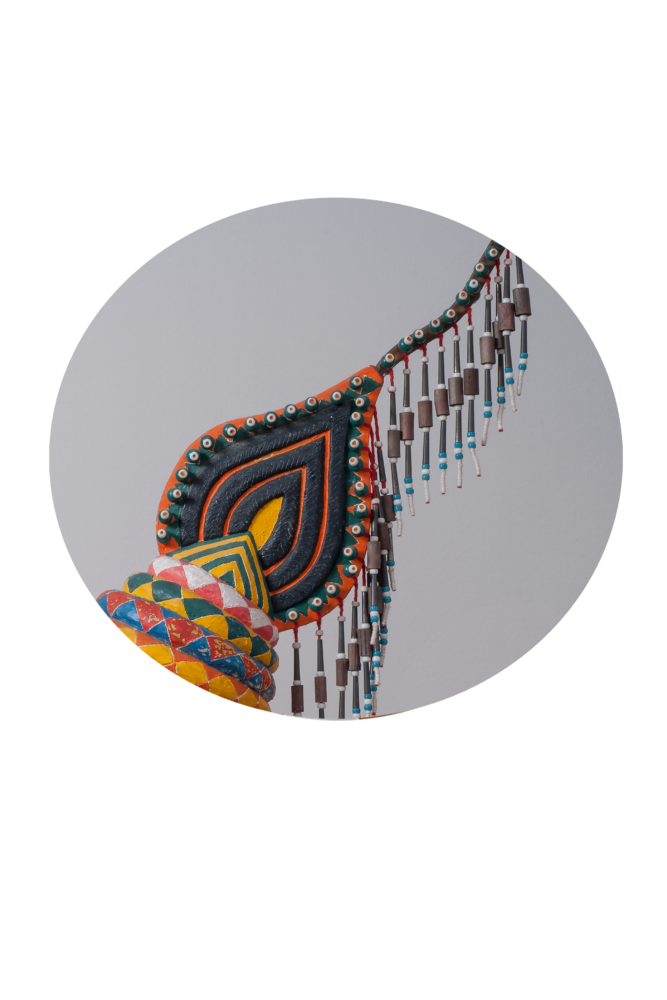

He talked so often about hair and the value of hair and seeing hair as something that was connected to the divine, or like, I was reading before this one of his interviews and he was talking about perpetually trying to sort of, I don’t know the right word for the, like, frame construct, like make his hair grow upwards. And seeing that here too, there seems to me to be a relationship between that, this consideration of hair, this consideration of upward motion and this sense of transcendence or something that is outside the norm or something that is connected to the divine, which I just find really appealing. I mean, it’s in some ways it’s very literal, like what is transcending? What is above, what is beyond, but it’s also like a wildly visceral metaphor of how can we live beyond what we’ve been given?
Dr. Andrew Westover

He thinks about hair as like a kind of antenna to connect with this other world of beings, right? The Pasaquoyans.
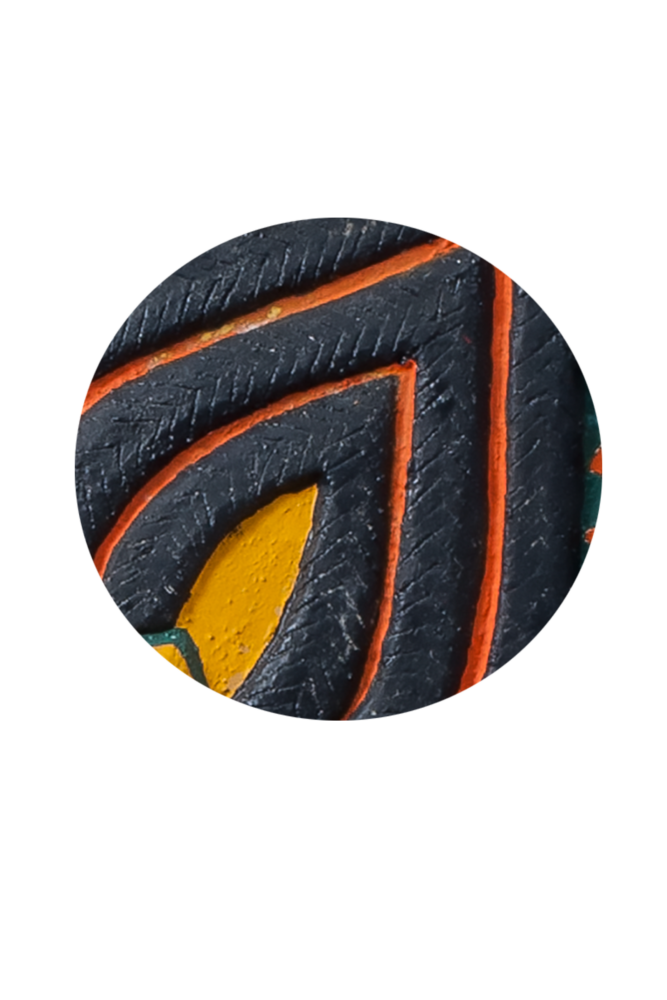
He had a very elaborate, personal mythology and again, this is where we think about the power of imagination and it’s on the one hand, you know, like for someone that’s not familiar with that mythology whatsoever, it’s easy to write it off as just madness. And I think there’s always, mystics are also often associated with a sense of madness because they see things that the rest of us don’t see first.
GR
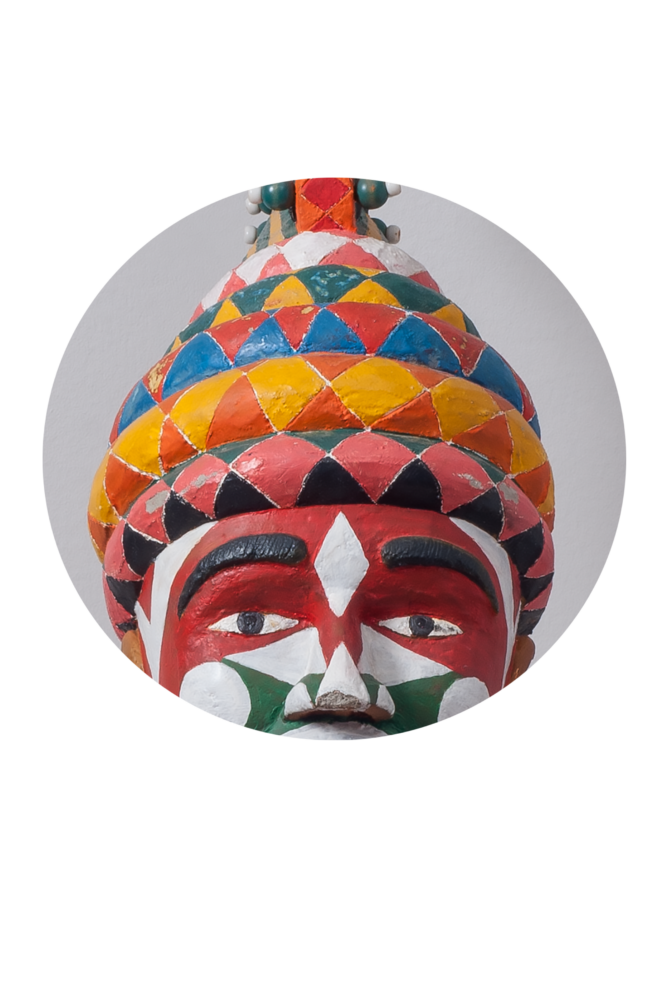
Because it’s so iconic, I feel like all of this has some kind of meaning. It’s not simply decorative. So I wonder to what degree, you know, the diamonds on the body or the circles and triangles, do they reflect other kinds of spiritual physiognomy? Because he clearly had this whole theory of some kind of metaphysical body, right? So I think I find that interesting. I mean, I also it just looks like some really fun, Christmas gingerbread man. too, right? Like there’s a kind of deep joy in this because of the colors, because of the vibrancy, it’s very solemn, but it’s also, it’s playful too.
GR
Totally, I think there’s a way in which it could just be totemic, but there’s also a way in which it’s just like clever or cute or queer or in a way that a child would walk up and be engaged.
AW
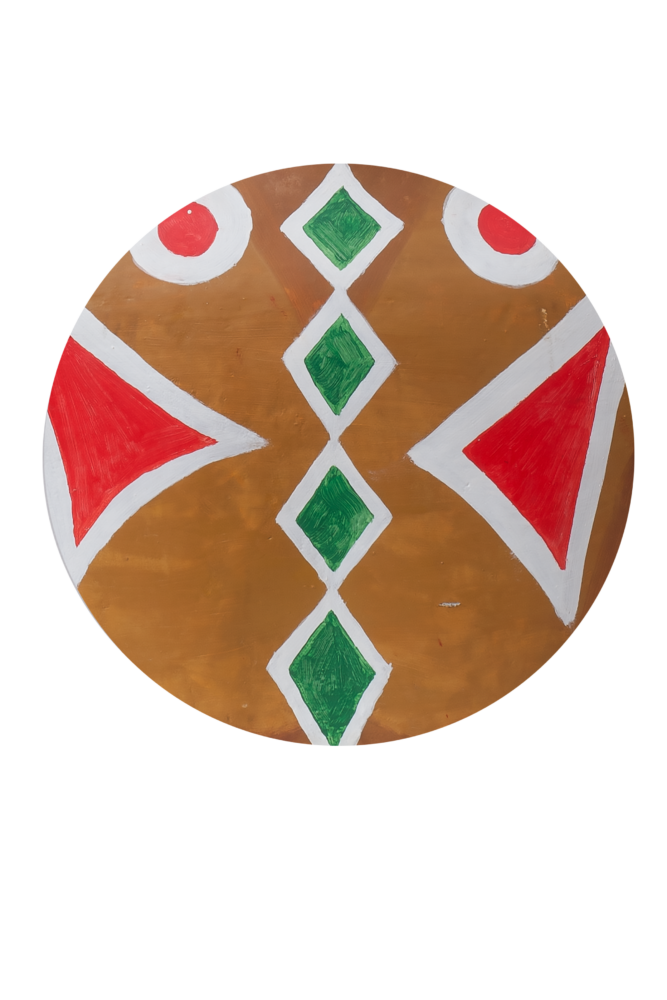
There’s a way in which, are we seeing this as a window? Are we seeing this as a door? Like, I like that this object makes us ask questions about how much we’re actually seeing versus how much we’re laying onto this work when it comes to trying to make meaning.
AW

That part of what he does is appropriate really broadly. And I think, you know, now appropriation in some circles very quickly just becomes a categorical bad. I tend to hew away from that because I think most art to some degree is appropriative and we have to think about, you know, what are the implications of that? But as you look at this, I wonder how you think about his use of symbols and forms and shapes, some of which may be closer or further from his own lived experience, and how do you think about that as a creative practice?
AW
Yeah, I think that’s a good point that you raised about appropriation. I mean, I think that today it’s accrued a kind of negative charge, a pejorative charge. But I think that thinking about his context, which is, you know, early and mid-twentieth century, he was really striving to expand his horizons in any way he could and I think he was deeply respectful in how he was engaging this material from what I can see and tell. I think, you know, he imagined these beings as universal beings and I think he did have a certain kind of fetish for Indigenous-like motifs and themes, I suppose. He drew a lot clearly from Mesoamerican styles. Of course, Native American, like North American, Native American styles. If you’re on the compound, you see there’s clearly a lot of like, South Asian, like Mandala kind of design. But I think that it’s part of his mythology of trying to recover some kind of a universal human experience. And again, if we think about him in the context, where it was the Jim Crow context, it was criminalized to be homosexual. He was just trying to find connections with a broader world that was being denied to him. I also don’t get a sense, going back to this idea of appropriation, that he was somehow somehow exploiting or taking advantage, or marginalizing the communities he was drawing from. I think this was very much an integrationist project. I think it was a universalist project.
GR


There’s an element of this universalizing impulse that we can sort of see as, coming from a place of desire for connection, of desire for a sense of shared humanity and from someone who so clearly was excluded so often in so many parts of his life, whether he was, you know, excluded from queer communities or from faith communities or from communities based on race, like they’re just all these instances in his life. And then when we look at this object to see him really in some ways, trying to just pull together these radically disparate positionalities or experiences and say, what if and to make that what if something that’s visible.
AW
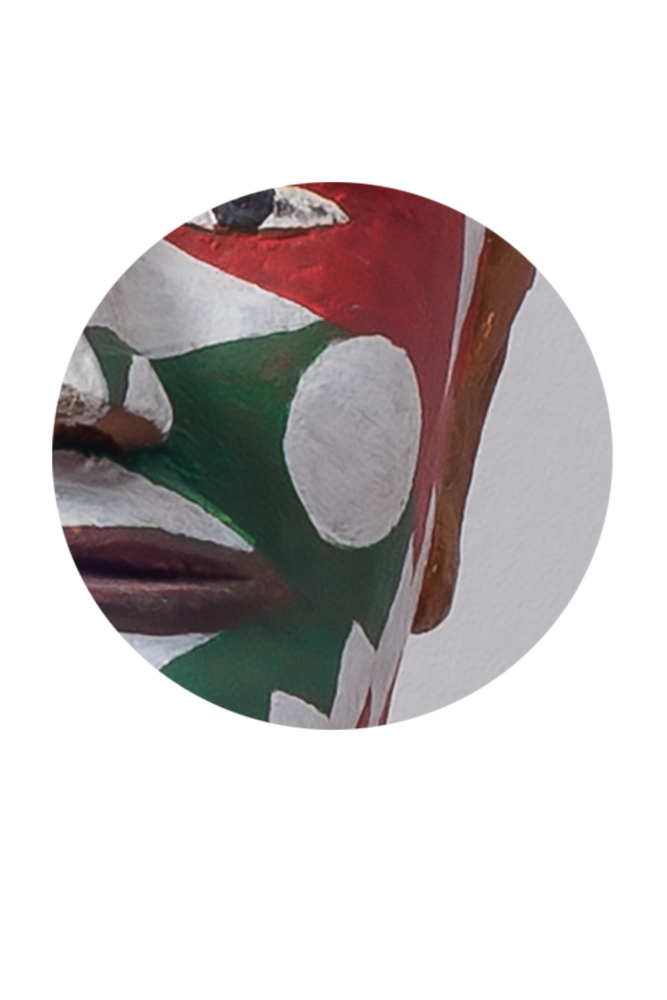
I think a lot of the outsider art that I’ve seen draws heavily on a kind of vernacular Christianity, and which expresses its own deep imagination of reinventing and reimagining and expanding what Christianity can mean, but I think St. EOM shows a different direction in simply trying to transcend completely the communities he came from initially.
GR

I think in this instance, St. EOM’s work became pushing against specific traditions he knew, and creating something that embraced sort of a sum of lots of their parts. Maybe, yeah, as an intellectual project, perhaps, but also like clearly as a physical one.
AW
I mean, he was clearly driven to remake the world in his own, I don’t want to say his image, but like I think in his vision, and I think that even comes down to the level of this art that we’re looking at, I mean, he’s not a professionally trained artist, but he was just so passionate and motivated to create a world around him that he used these very common materials like cement or like hardware store paint, and just like produced these really beautiful vibrant creative pieces that physicalized, they manifested the world of his imagination around him, so the compound at Pasaquan is just stunning, right? And it was a project that was continuing to be built until his last days.
GR

I mean, I started out saying that they were nude, but I think it’s that they’re unclothed because they’re anointed, right? They’re prepared. They’re dressed, but they’re not clothed, I think, which I think is an important distinction, and although they’re exposed by our eyes, you know, there’s a clear dignity to them.
GR
I think that’s something that the posture gets me really strong in this instance. That there is this sense of presence, dignity, a sense of self that feels both contained and able to emanate.
AW
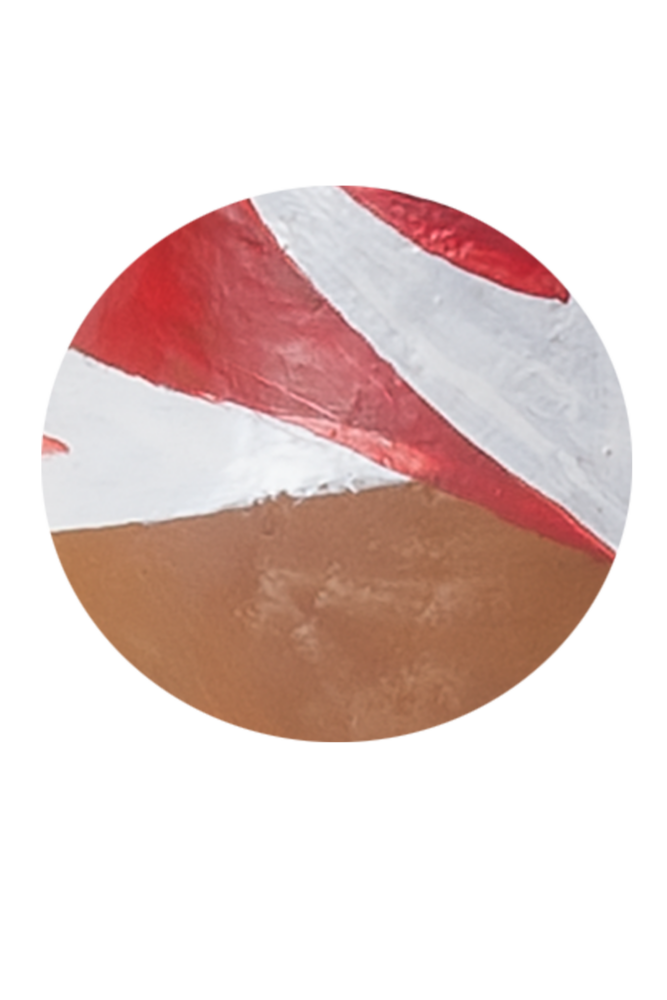
And I don’t think it’s an accident that we see a lot of reimaginations of current spiritual traditions being led by queer people.
GR
There’s just a sense of physical presence that allows whatever spiritual energies he’s trying to harness or present to then be with us as we’re encountering this. Makes me want to stay with it more.
AW
It’s a lovely piece. It’s worth coming back to, yeah.
GR
Eddie Owens Martin (St. EOM)’s Pasaquoyan Man with Ritual Headdress and Levitation Suit is currently on view at the High Museum of Art, Atlanta, in Gallery 405. Pasaquan,

